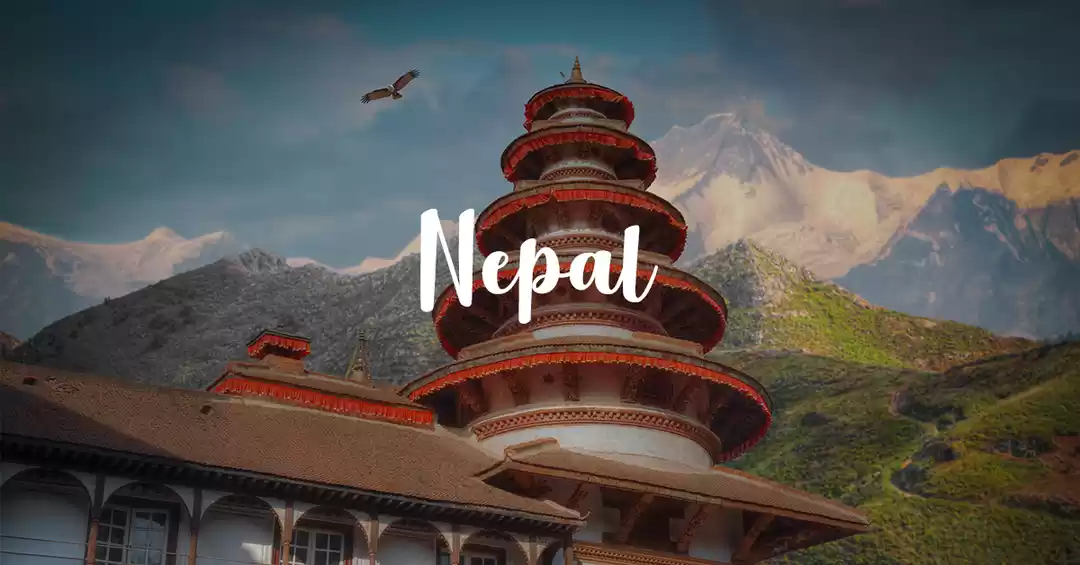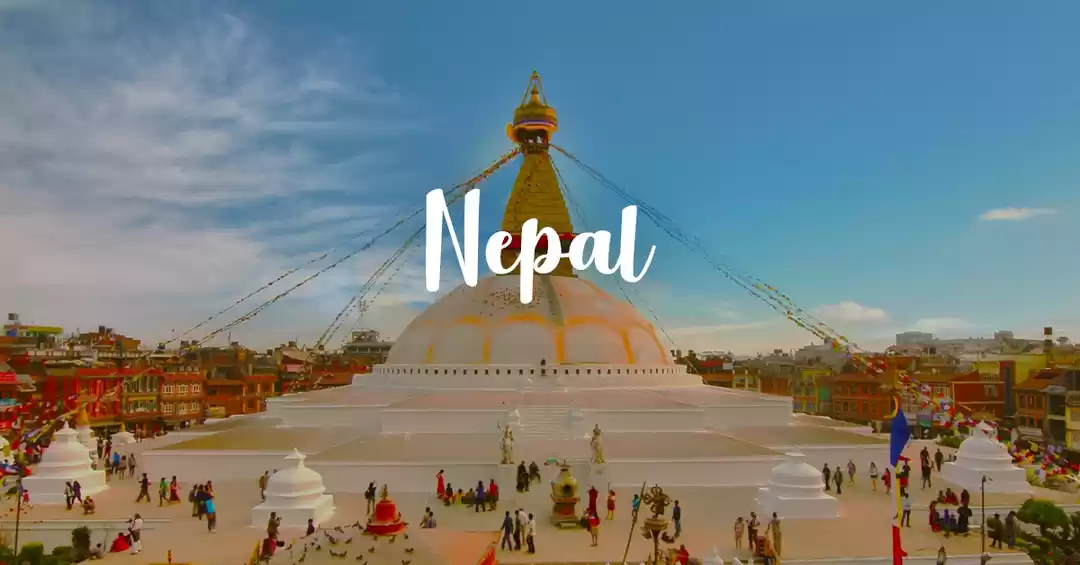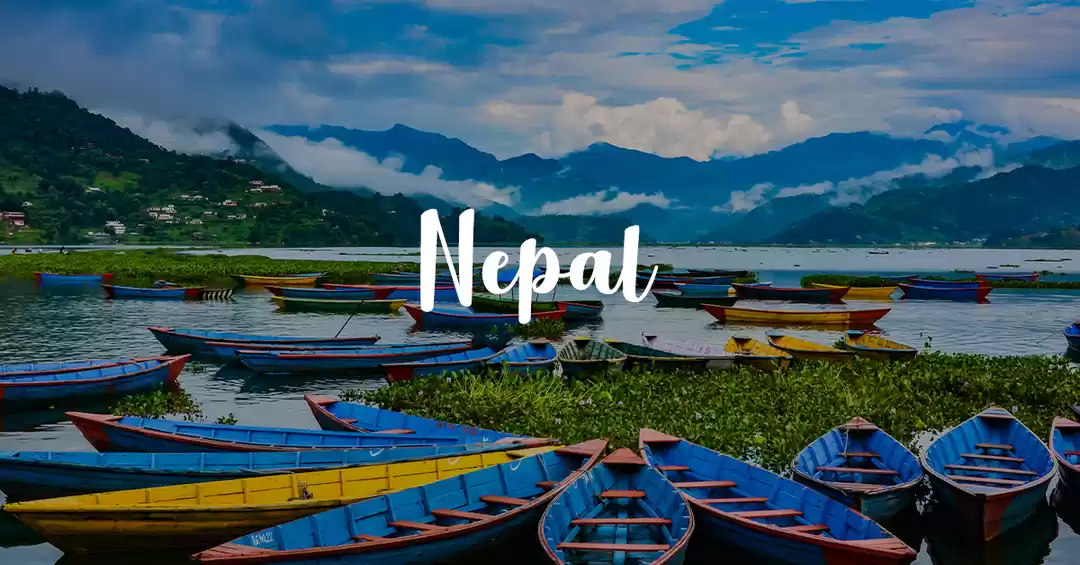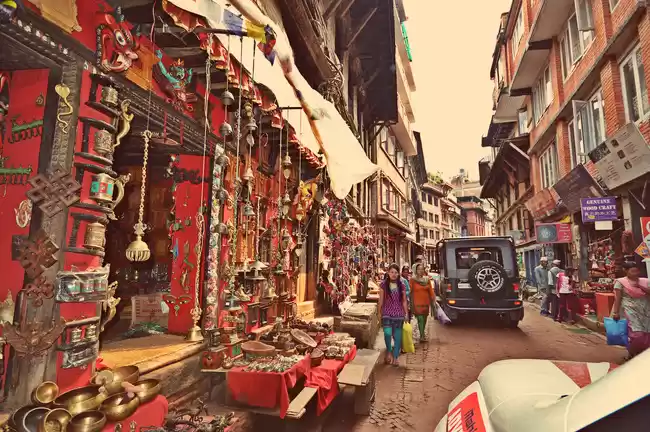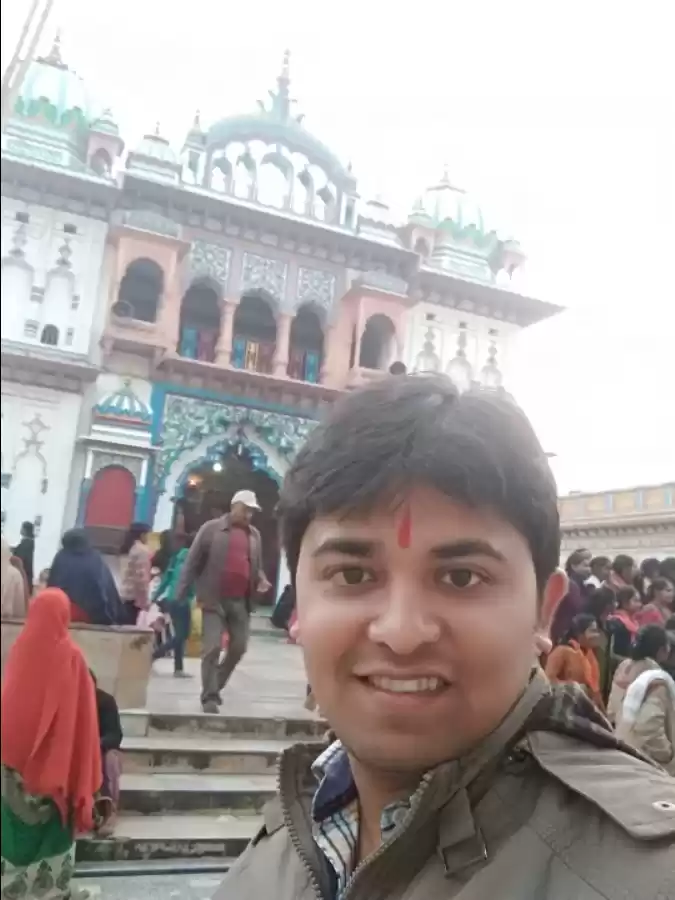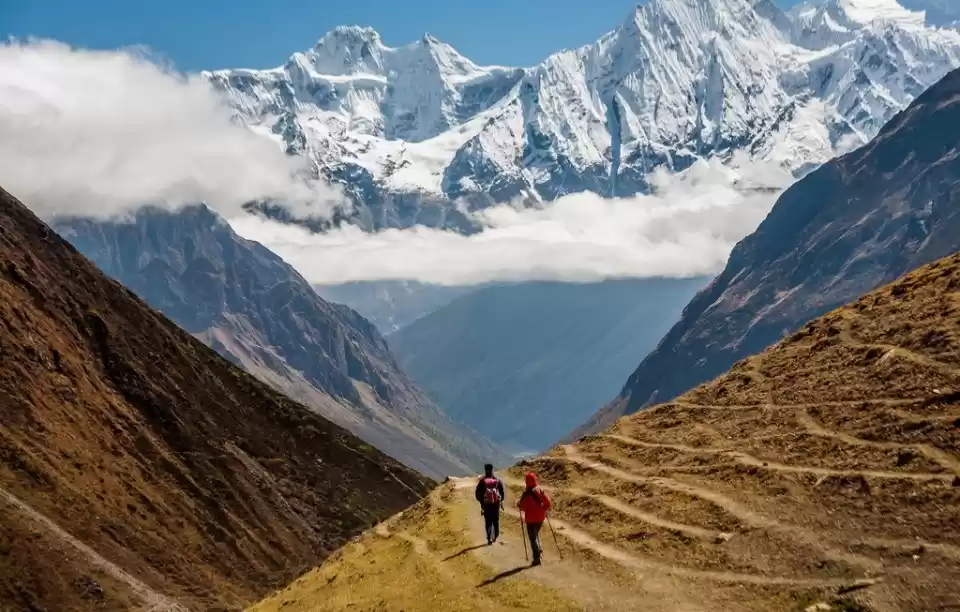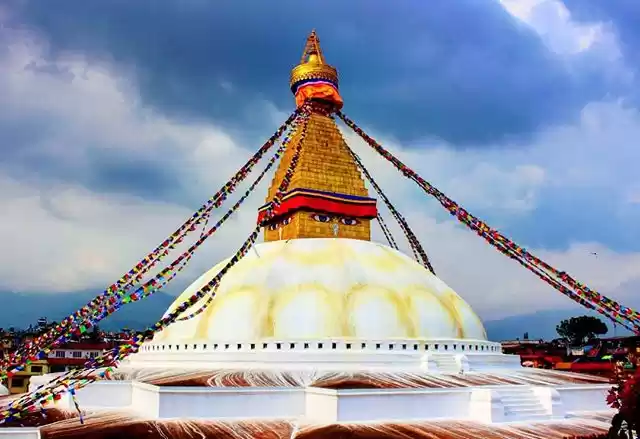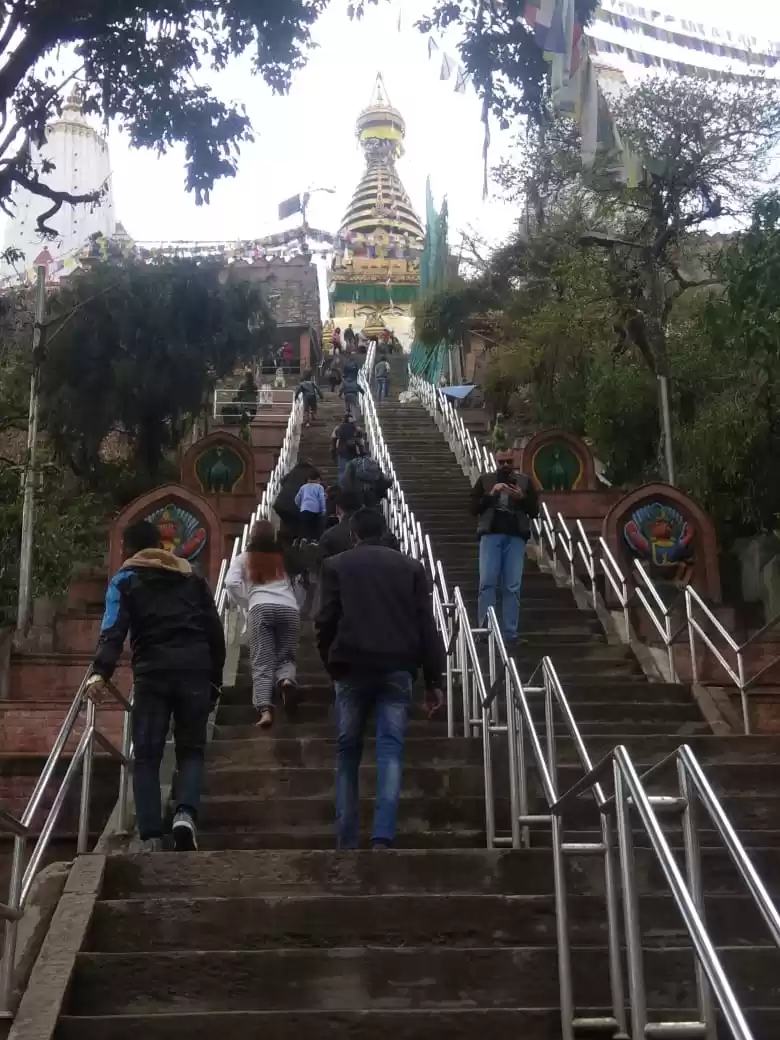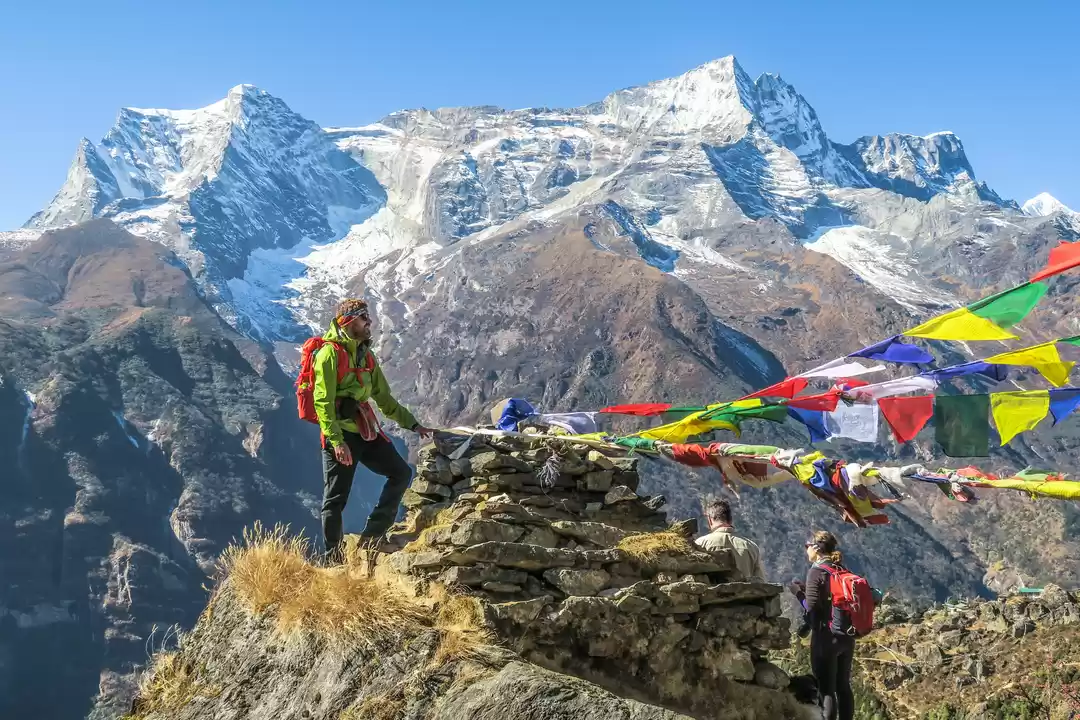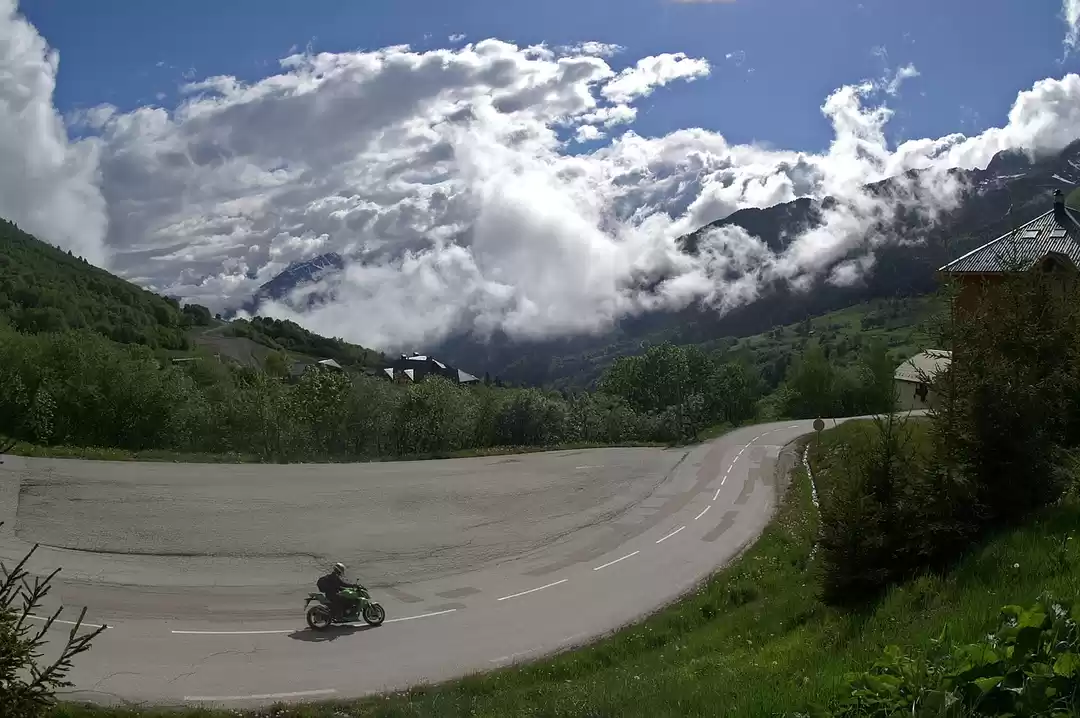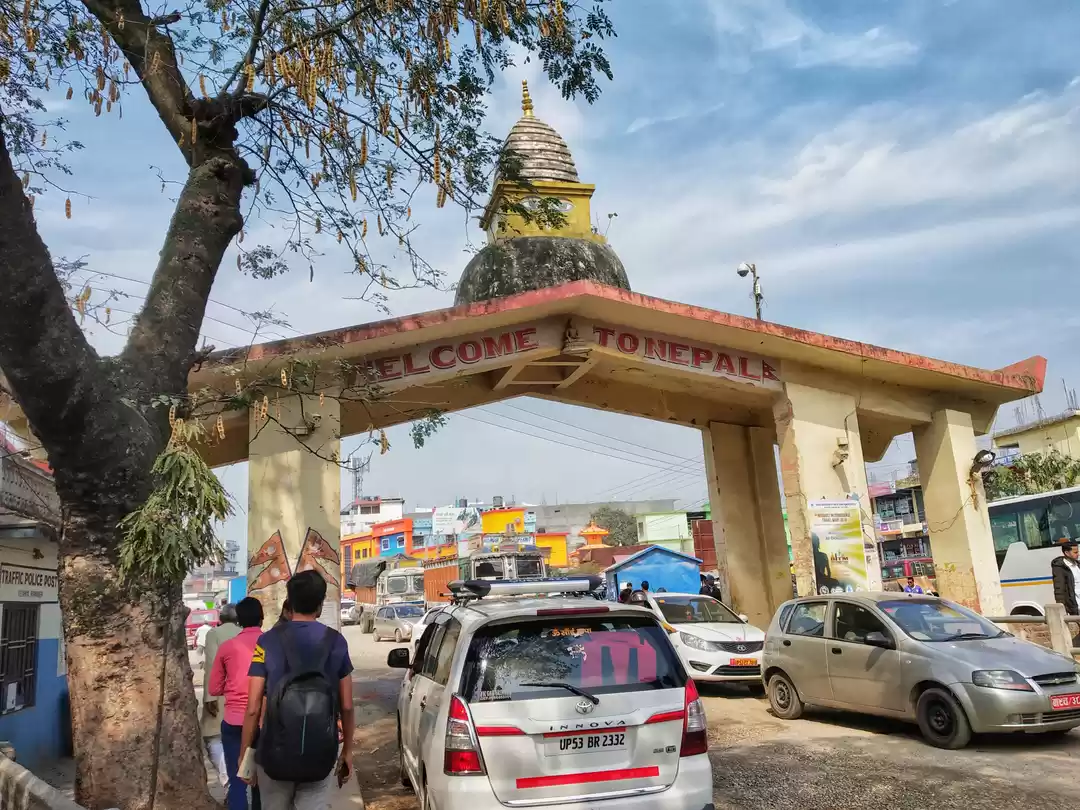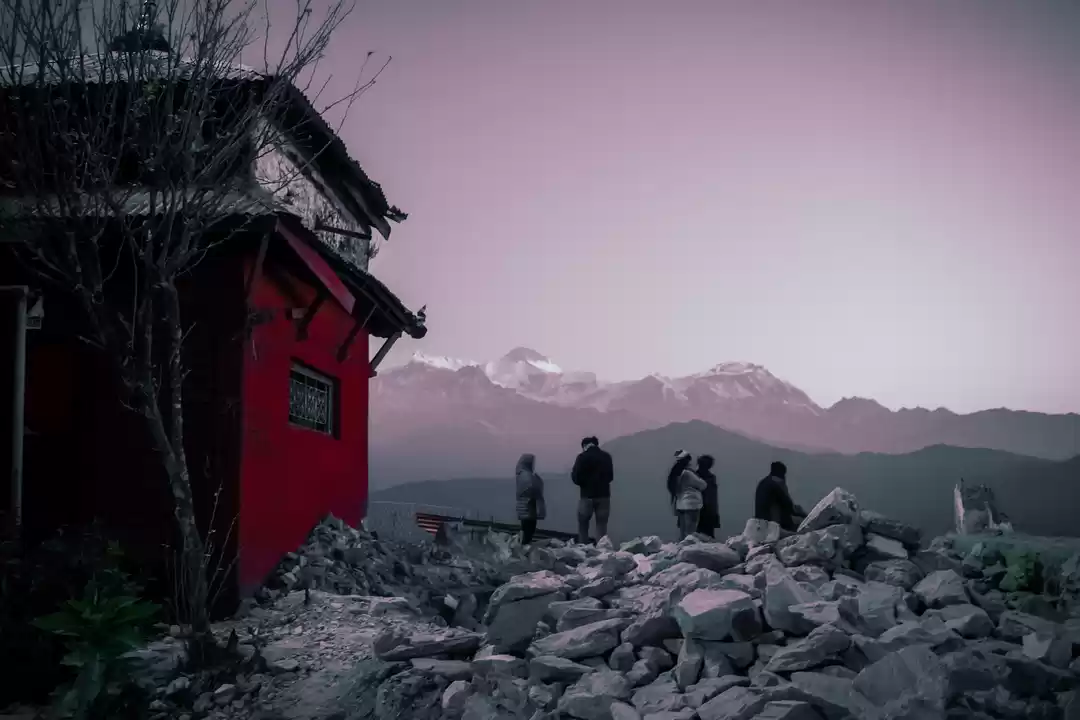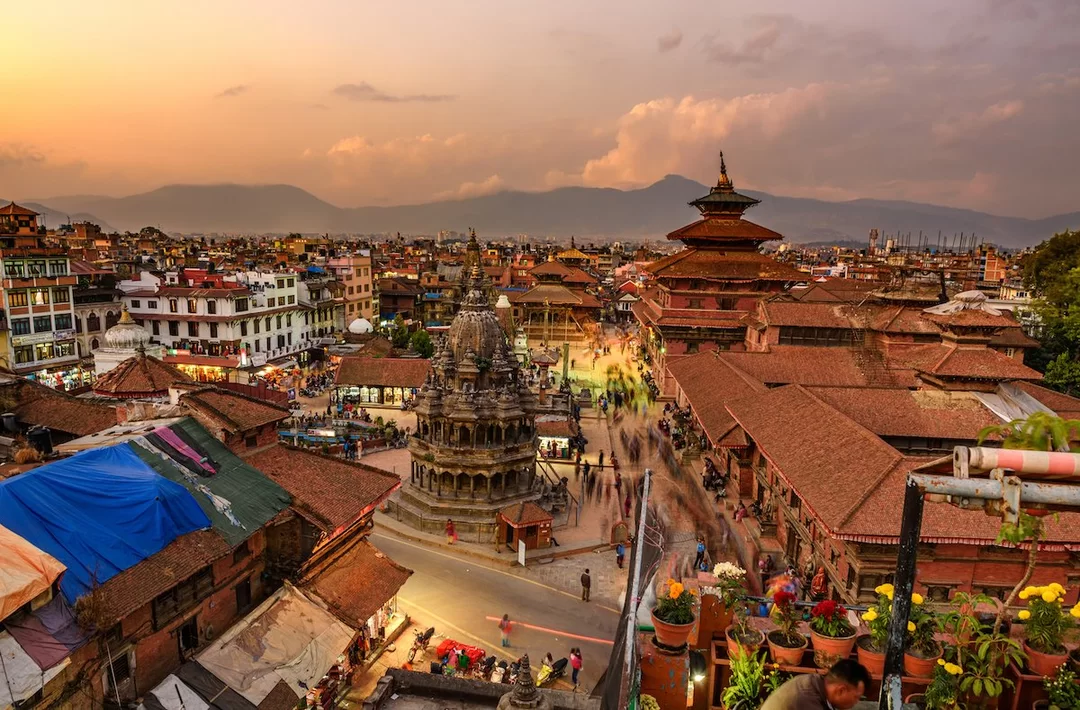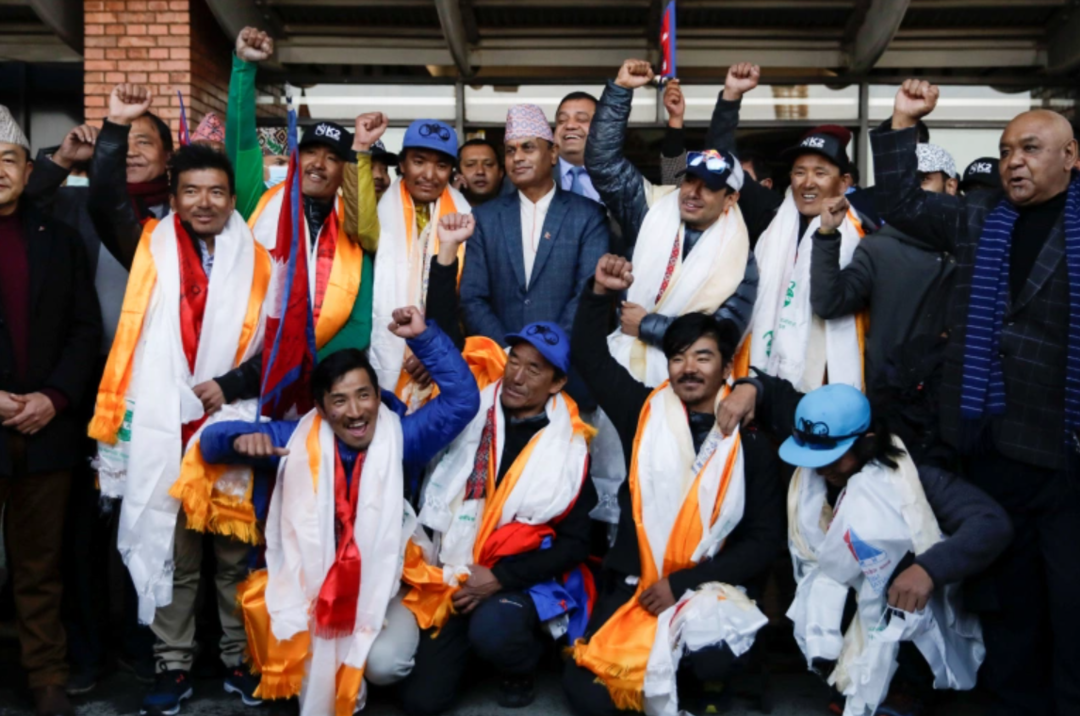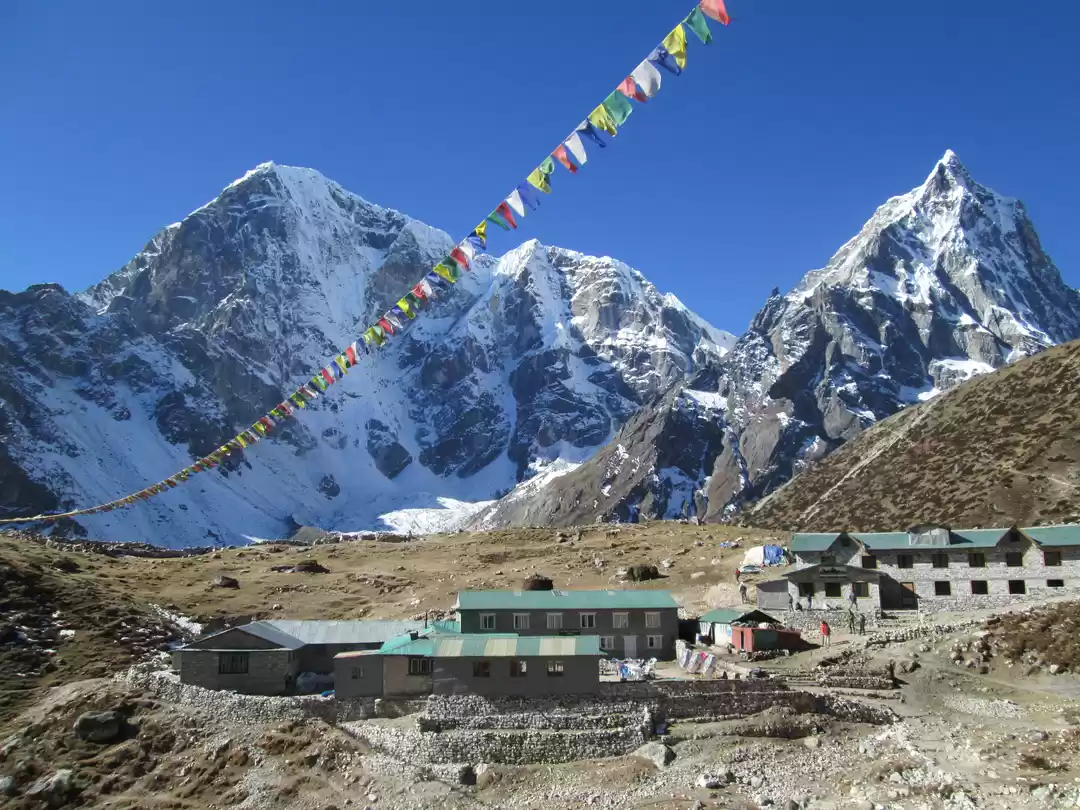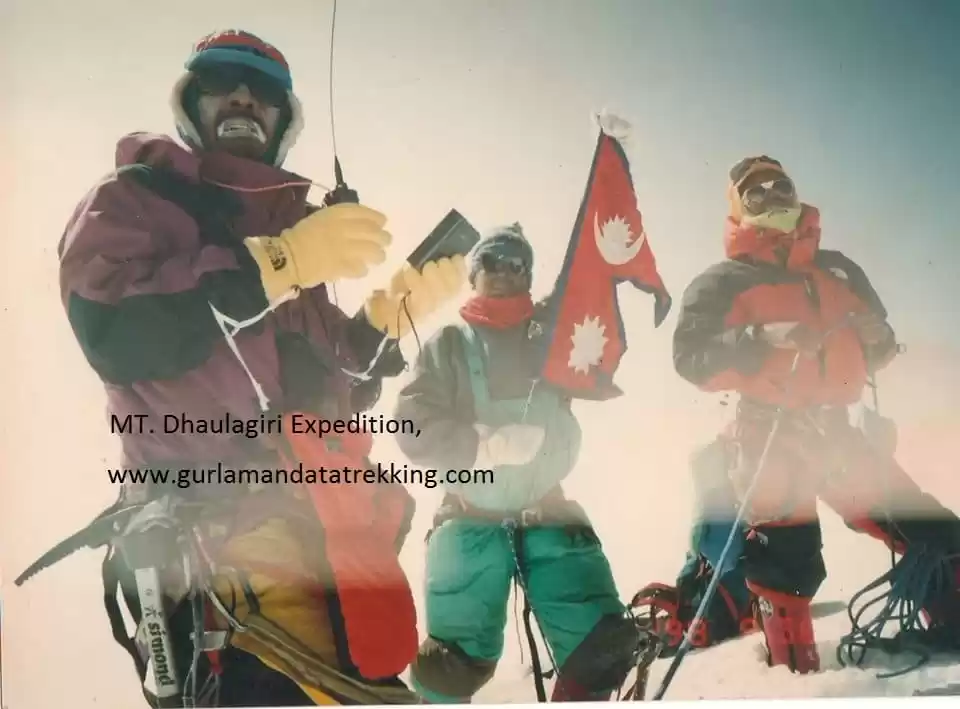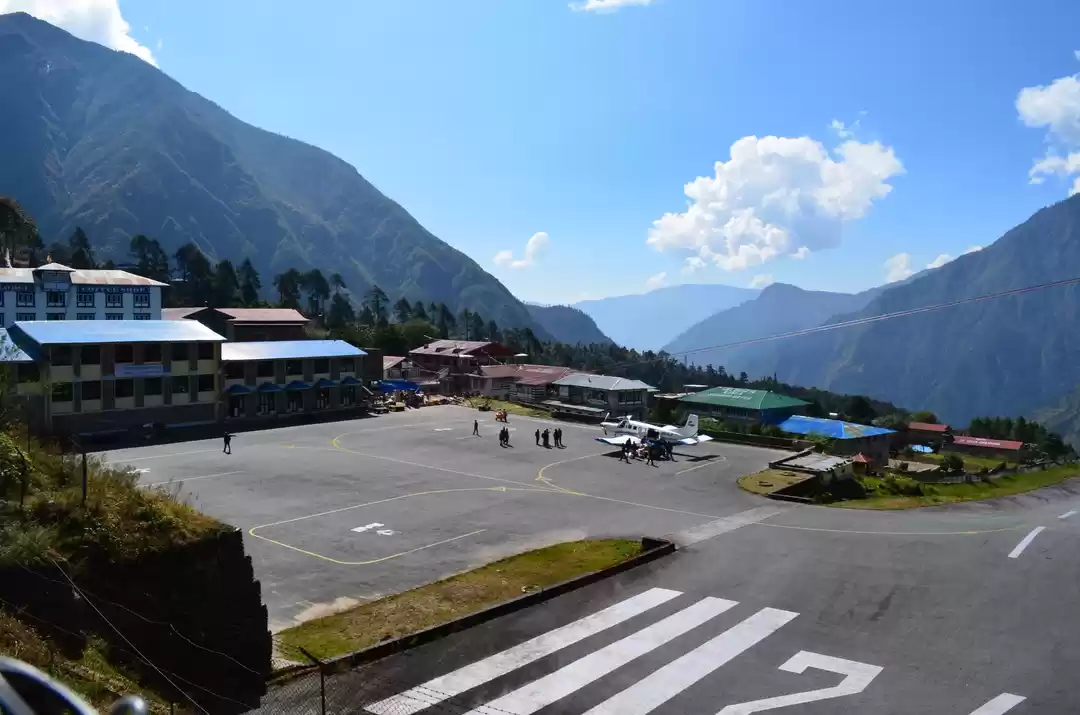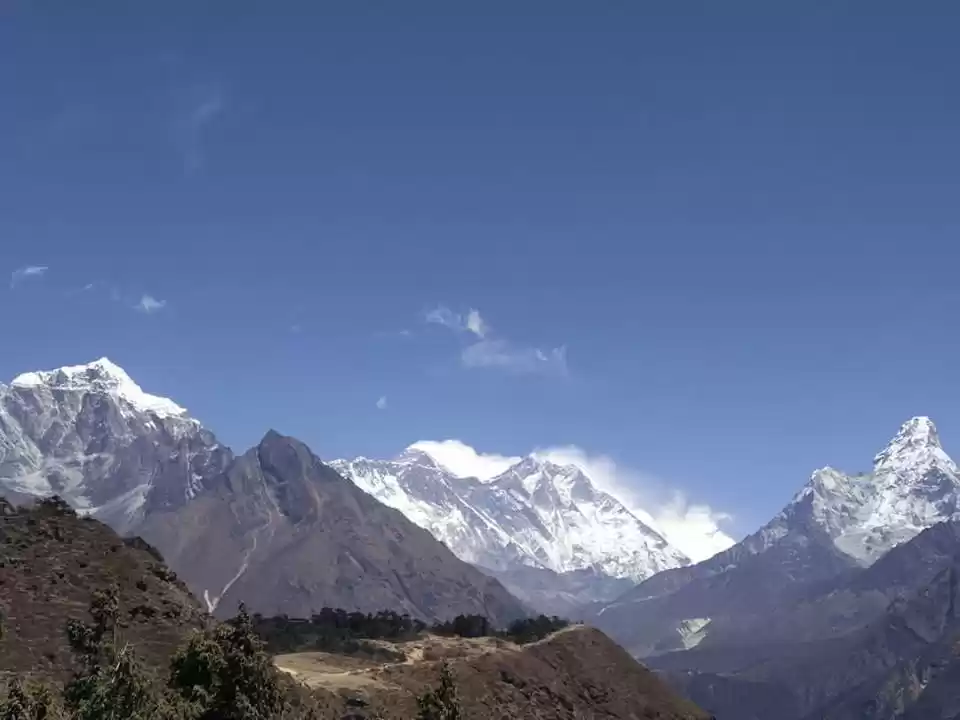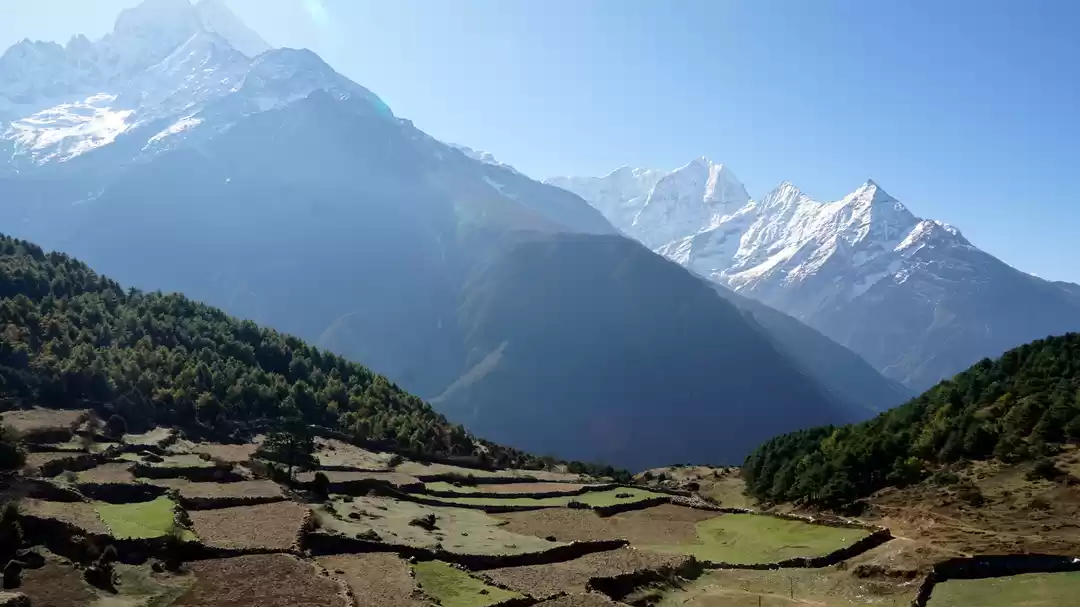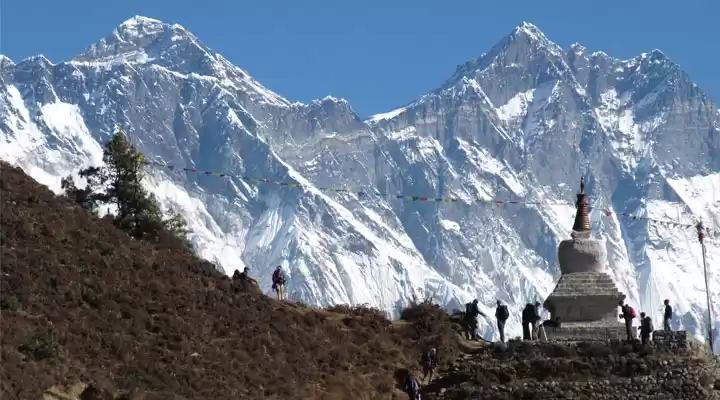
Everest Base Camp trek equally popular by the Name EBC trek is one of the famous destination for adventure lovers. Everest Base camp trek not only offers jaw dropping mountain views but also gives opportunity to have unique cultural experience. The homeland for Sherpa people, who are the pioneers and incomparable partners for climbing the high mountains Everest area also houses the beautiful monasteries. About two weeks hiking in the Everest open your eyes about how people can live up high there, how a human body can hold so many kilos with a strap on a forehead, how the body will adopt with cold and what means luxury and why still you are complaining about what you have?
We are giving idea about Everest Base camp trek considering the cost, itineraries, guides and porters, altitude sickness and health problems, packing list and food and accommodation available in the area.
The fact of Everest Base camp trek
Distance: Roughly 130 kilometers round trip from Lukla to Lukla
Time frame: 10 -12 days of walking
Highest point: Kalapathhar (5.550 meter above sea level)
Cost of the trip: variable from $1000-$2000 for the whole trip
Cost of the trip
The cost of the trip depends with whom you book and what type of service you want to include in the trip. You can have option of doing the trek with international operator, online tour companies like tour radar, get your guide etc., all inclusive package of local operator, trekking with guide and porter from local operator and just on your own. The cost goes in the order of expensive to cheaper as you have seen the different ways to do this trek. Some of the trekking companies now offer GAP package, where the GAP stands for guide, accommodation and porter. If you book the trip through trekking companies they include your permits also, otherwise you have to get a permit on your own.
Typical itineraries for the Everest Base Camp Trek
The following is the well-researched itinerary for the Everest Base Camp trek.
Day 1: Take a flight to Lukla and walk from Lukla to Phakding
Day 2: Walk from Phakding to Namche Bazar
Day 3: Acclimatization day at Namche but can do side trips from Namche Bazar
Day 4: Trek from Namche Bazar to Tyangboche
Day 5: trek from Tyangboche to Dingboche
Day 6: Acclimatization day at Dingboche with some side trips
Day 7: Trek from Dingboche to Lobuche
Day 8: Trek from Lobuche to Gorakshep and Visit Everest Base Camp in the afternoon
Day 9: Hike up to Kalapathhar and trek back to Pheriche
Day 10: Trek from Pheriche to Kyanjuma
Day 11: Trek from Kyanjuma to Monjo via Khumjung
Day 12: Trek from Monjo to Lukla
Day 13: Fly back to Kathmandu from Lukla
If you like to reduce one more day you can walk from Pheriche to Namche and Namche to Lukla but there will be no opportunity to visit Khumjung and its monastery. The itineraries are flexible according to walking speed of individuals. Besides the main villages the tea houses are available in some of the villages in between also.
Guide and porter in Everest Base Camp trek
Unless you do trekking on your own you suppose to hire the guide and porters for your trips. Most of the trekking company has their own guides and there are some freelancers too. Porters are hired from Lukla as the company save the flight tickets of porters from Kathmandu. Some companies to save the flight tickets of guide they might arrange from Lukla too. There is a different tariff for foreigners and locals regarding the flight tickets. Guide not accompanying in Kathmandu airport some time create difficult situation for trekkers as it is very chaotic during peak season and bad weather. All the guides are registered but their ability and experience varied. If you hire a guide and porter from agency they are insured but if you hire a freelancer they might not be. Make sure to hire somebody who is insured as it is illegal to hire somebody without insurance. The insurance document is written in Nepali so most of the time trekkers find difficulty what the policy is. Most of the company has group insurance and that does not cover rescue but cover their life in high altitude. Normally our practice is we send your guide to the airport to find you so you are familiar with your guide from than beginning. Last minute changing your guide is not possible as we buy the flight tickets earlier as we allocate the guide when you make a booking with us. In the airport identity is compulsory. If you want a guide with special language ability please discuss with the agency before you book the trips. Language speaking guides might incur extra cost to clients ask for a difference. You have to remember the tour guide and trekking guides are different and normally to become a tour guide they need higher level of education and advance knowledge of culture, religion, language etc. There are lots of tour guide who speak your language and their tier of payment is also higher. All the trekking guides mostly they speak only English and some of them might of basic skills on other languages too. Hiring a tour guide on a trek sometime even creates a trouble as the trekking is not frequent for them and they are concentrated mainly in tours, sightseeing and excursions. If you form a group of particular nationality and want your language speaking guides we can send tour guide who also accompany trekking. Not only trekkers get sick in the mountains but some time our guide and porter might be ill during the trek, normally this does not happen but it is not 100% sure, we have a practice replacing guide and porter without changing your itineraries.
Altitude sickness or acute mountain sickness and health problems
As most of the trekkers are not exposed to higher elevation before the trip, they might get altitude sickness when they go more than 3,000 meter above sea level. Proper acclimatization is necessary for everybody. Our itineraries are well researched and follow our itinerary or instruction of our guides. A lot of people they have sleep disorder, insomnia, fatigue, headache and dizziness. You can read in detail on another blog about altitude sickness with its signs and symptoms and health problems during the trek. Do not continue your trek with altitude sickness as it might kill people, acclimatize well. Taking medicine might help to overcome the problem but the best way to survive is going to the lower elevation where you feel comfortable. Many people they take Diamox but actually it works as respiratory stimulant and does not have significant side effect.
Packing list for Everest Base Camp trek
Not to leave essentials and not to pack whatever you don't need for trek is the golden rule to do your packing. You have to consider during the flight from Kathmandu to Lukla they have weight limit of 15 kg per passenger including everything. The hiking boots and weighty jackets you can put on during the flight. We have details on what to pack for Everest Base camp trek. As every two trekkers get one porter consider the weight for the porter too. The porters usually carry 30 kgs of your load and their own small bag.
Food during Everest Base Camp trek
As Everest Base Camp trek is flooded by thousands of trekkers every year there are quiet wide variety of plates are served in most of the area. The food price goes high as you go higher. The typical foods you get during the Everest Base camp trek are discussed below.
Breakfast
Choice of egg whether you like as omelet, boiled, fried scrambled with toast and Jam, butter, honey is very common. Mostly they set breakfast with egg, toast, potato and tea, coffee. There are very less places where you get really good coffee as mostly they use soluble instant coffee. Chapati, locally made dry bread out of wheat flour accompanies with omelet is also common. Tibetan bread or Sherpa bread which is oily and fried with choice of egg is another alternatives. Porridge, pancakes and muesli are also available for breakfast.
Lunch and dinner
Thukpa is a local dish consist of noodles and vegetables or chicken comes soupy in nature. It is good for cold. Momo are the dumplings filled with chicken or vegetables or even with cheese and potato. Spaghetti, fried rice, macaroni, sandwich, rice with curry, spring rolls with different fillings are available. Some places they make burger and chips too.
Dalbhat is very common and guide and porter stick with it throughout the trek. Dalbhat is nutritious, staple and bottomless choice as you can have extra for the same price. Dalbhat is very good and is of wide variety for starving trekkers. Dalbhat is mostly fresh and as the vegetable and lentil keep changing the taste also changes.
Some tea houses offer Sherpa stew is practically mixture of handmade noodles, vegetables and yak or sheep meat.
There are no free food for guide and porter but subsidized by the lodge on Dalbhat so don't buy food to them, you can offer light snacks like energy bars, chocolate rolls if you have carried some extra. Your guide and porters will not starve as they know small local huts where they prepare spicy light meals for them. Once our trekker tried these spicy potatoes he got a serious diarrhea the same day and had to take a rest for a day.
Drinking Water
Water is essential and bottled water is expensive up there in the high mountain. You can opt for different methods for purifying the water. Water purifying pills, chorine solution and life straw are common methods for purifying the water. How pristine it look like we do not recommend trekkers to drink river and tap water as it has different salt concentration your stomach is not used to and might give trouble to trekkers. The bottled water is discouraged due to environmental issue also because they do not properly handle the empty water bottles there. During winter time the water inside the water bottle get frozen inside the room at night time. Sometime even the bottle gets broken due to formation of ice inside the bottle.
Accommodation
Most of the accommodation in the tea houses are twin sharing, clean and simple, thin walled mostly made out of board and not have much privacy as you hear another room. Shared bathroom is common and paying extra with private bathrooms is available in some places. Lower elevation there are luxury lodges are available but they are expensive and most often you have to go with prior reservation. Most of the beds have blankets and extra electric blankets are available paying extra money. Lodge owners do not enjoy trekkers who carry foods on their own; you suppose to eat at the same lodge you stay. You can choose pocket friendly dishes if you want to save some money. No power outlets in the room you can pay for charging your device with the lodge owners and charge them in a public area or handover to them and collect it later. In higher elevation in winter temperature goes very low that water bottle freezes inside the room.
All the tea houses has dining hall, most of the dining hall with fire place where they burns wood and yak dung to make it warm and to dry clothes. You can dry socks, towels and clothes there.
Shower is chargeable and some places even when you get a private bath there is no hot water unless you pay for the shower. Shower in the high places is only bucket shower or dry shower with wet towels and wet wipes. Carry hand sanitizer for using when there is no water available or when it is too cold to wash your hands.
Money and ATM
Carry local money but most of the foreign currency accepted with lower exchange rate. The last ATM is available in Namche Bazar. ATM service is not that reliable. After Namche Bazar there are no ATM's.
Permits and flights
There is a national park fee besides the local authority they charge a permit to enter the area. TIMS, trekkers information management system by the central government can be obtained from Kathmandu is issued either by your agency or Nepal Tourism Board is some time not necessary. To play on safe side buy TIMS and go there it just cost $20 if you go through the trekking agency they will sort it out.
The flight to Lukla is quiet tricky and weather dependent. Normally there is flexibility for returning flight from Lukla if the weather gets bad without extra cost. Your guide might telephone to the airline and change the date if you get stuck up there with any problem. Helicopters get less affected by weather, paying extra you get lifted by helicopter, prepare for that. Even if the helicopter is not flying you can walk down two more days to Salleri from Lukla and take a Jeep to Kathmandu. Remember the road is rougher, slower, twister and probably lot more scary in places as they have unprotected edges and big drops. Many people they try hard to minimize the time on the road in the mountain area.
Insurance
Buy the correct insurance policy that will cover injury, evacuation and medical expense, gear loss, trip cancellation and trip delays. Make sure the policy will cover the altitude you reach during the trip. Read the policy carefully and carry a copy of policy with emergency contact numbers with you during the trek. If you opt for not buying the insurance take extra precaution during the trek.
Tips and Gratuities
It is customary to tip your guide and porter. The lodge owners do not expect any tips. We have tipping guideline that gives you rough idea about tipping for Everest Base Camp trek. Anyway the tip depends with the service you received and your satisfaction level. Don't forget to tip your porter before you fly back to Kathmandu as most of the cases your guide will fly back to Kathmandu with you.
The best alternative and thrilling than Everest Base Camp is Gokyo valley with Everest Base camp and if you are looking for more adventure in Everest area give a try to Everest Three High Pass trek.
You are welcome to visit our website www.himalayantravelconsultant.com and look for more informative blogs regarding any of the Himalayan trips. Himalayan Travel Consultant craft you the best possible itineraries for successful and wonderful trip to Everest Base Camp. See you for the best experience in the roof of the world.



